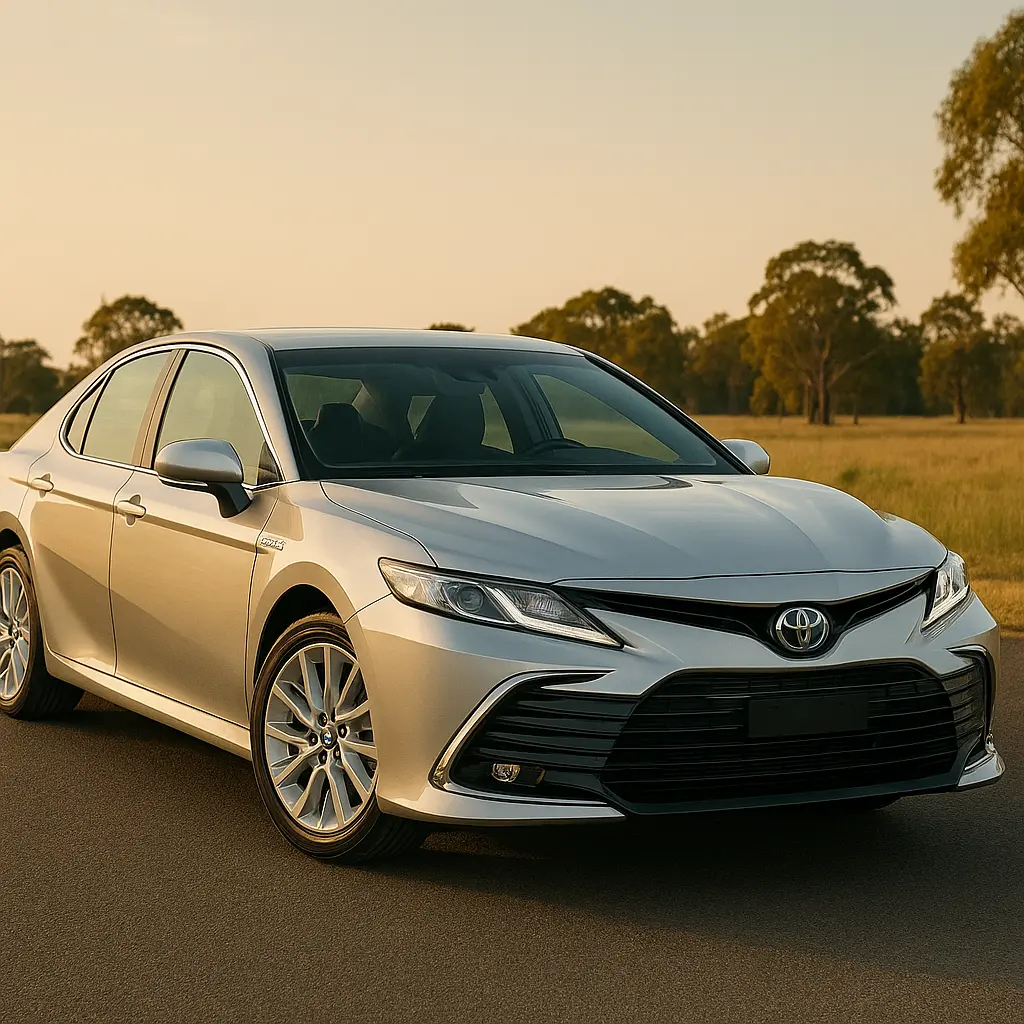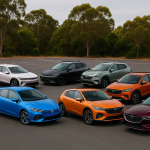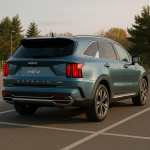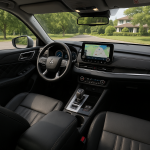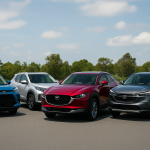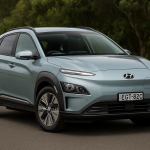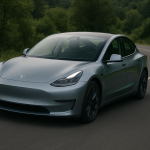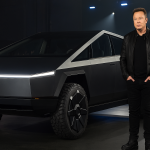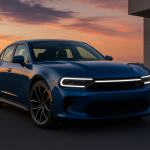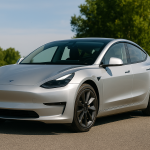When it comes to compact cars that blend sophistication, efficiency, and fun-to-drive appeal, the Mazda3 remains one of the most refined offerings in Australia’s small car market. Competing against the Toyota Corolla, Hyundai i30, and Kia Cerato, the Mazda3 distinguishes itself with its premium design, driver engagement, and overall polish that feels more European than its price tag suggests.
This review dives deep into both the Mazda3 Sedan and Hatchback—covering performance, handling, fuel economy, safety, pricing, and ownership costs—to help you decide which version best fits your needs.
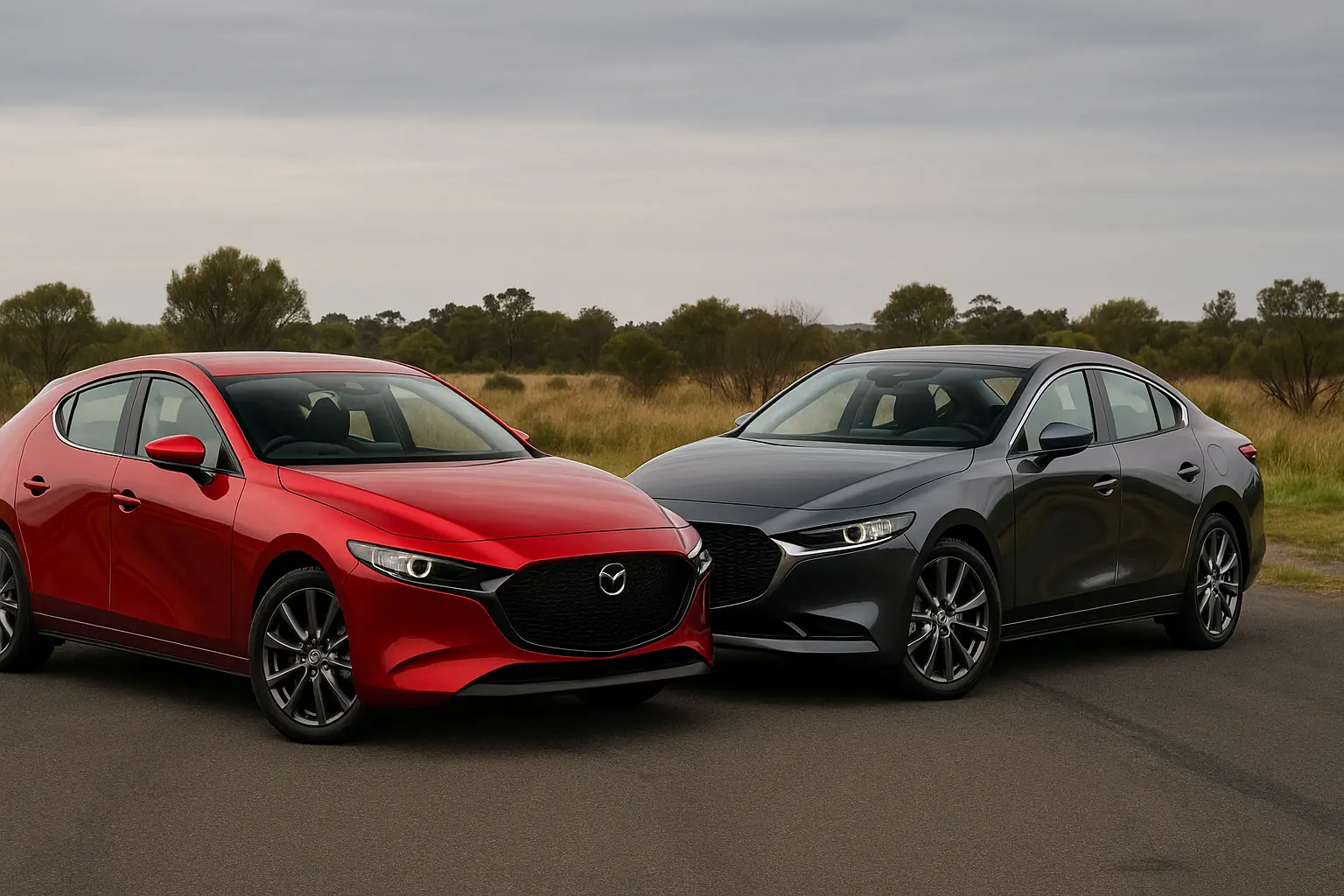
Exterior Design – The Art of Motion
Mazda has long championed its Kodo design philosophy, meaning “Soul of Motion,” and the latest Mazda3 demonstrates that art beautifully. The car’s exterior lines flow seamlessly, creating an impression of movement even when standing still.
Mazda3 Hatchback
The hatchback takes on a more daring, sculptural appearance. With its thick C-pillars, tight rear proportions, and sweeping curves, it resembles a compact coupe rather than a traditional five-door. The bold design does come at a small cost to rear visibility and boot space, but style enthusiasts will find it irresistible.
Mazda3 Sedan
The sedan, by contrast, exudes understated elegance. Its long bonnet, flowing roofline, and defined rear proportions give it a sense of maturity. If you prefer a cleaner, more traditional look—and want more luggage room—the sedan is the way to go.
Both models feature LED headlights, sleek alloy wheels, and Mazda’s signature grille that gives a refined, upscale face—making the Mazda3 look at home beside entry-level European sedans.
Interior and Cabin Quality – Premium Beyond Class
Step inside the Mazda3, and you’ll immediately notice that it feels more luxurious than its segment rivals. The interior uses soft-touch materials throughout, with a driver-centric layout that puts ergonomics front and centre.
Dashboard & Design
The minimalist dashboard flows horizontally, eliminating clutter. Mazda’s 8.8-inch infotainment display sits elegantly atop the dash, controlled by a rotary dial near the gear lever—a more tactile approach compared to touchscreens, which helps reduce distraction.
Seats & Comfort
Front seats offer superb support for long drives, and the driving position feels almost sports-car-like. The Hatchback is a little tighter in rear space due to its sloping roofline, while the Sedan offers better legroom and a more open feel for passengers.
The overall ambiance is reminiscent of a luxury car—quiet, refined, and comfortable—even on rough Australian country roads.
Technology and Infotainment
Mazda3’s infotainment system might not be the flashiest, but it’s one of the most intuitive once you get used to it.
Key Features Include:
8.8-inch central display
Rotary controller for safer operation
Wireless Apple CarPlay and Android Auto
Digital instrument cluster on higher trims
Optional 12-speaker Bose premium audio system
The sound quality from the Bose system is phenomenal for this class, offering deep bass and crystal-clear highs that audiophiles will appreciate.
Wireless charging, head-up display, and dual-zone climate control are available in upper trims like the GT and Astina, making the Mazda3 feel a cut above its mainstream rivals.
Engine Options and Performance
Mazda offers two primary petrol engines for the Australian market, catering to both urban commuters and spirited drivers.
2.0-litre Skyactiv-G (114kW / 200Nm)
This engine powers the entry G20 Pure, Evolve, and Touring models. It’s smooth, efficient, and adequate for daily driving. The six-speed automatic (or manual) shifts cleanly, maintaining a balance between fuel efficiency and performance.
In urban settings, the 2.0-litre feels refined, but highway overtakes require a bit more throttle input.
2.5-litre Skyactiv-G (138kW / 252Nm)
For those wanting extra punch, the G25 Evolve SP, GT, and Astina variants come with the 2.5-litre four-cylinder engine. It transforms the Mazda3 into a surprisingly brisk compact car. Acceleration feels linear and strong, aided by Mazda’s smooth transmission tuning.
The 2.5-litre also offers cylinder deactivation, allowing it to run on two cylinders during light loads, improving highway economy.
Transmission & Drive
All versions are front-wheel drive, paired with Mazda’s crisp six-speed manual or automatic transmission. Unlike rivals that offer continuously variable transmissions (CVTs), Mazda’s gearbox maintains a more engaging, natural driving experience.
Driving Dynamics – The Driver’s Choice
Mazda has built its reputation around driving enjoyment, and the Mazda3 is no exception. Whether in hatch or sedan form, it feels agile and composed on Australian roads.
Handling and Steering
The steering is well-weighted and precise, giving genuine feedback. The chassis feels planted through corners, with minimal body roll. On twisty coastal roads or mountain routes, the Mazda3 feels alive—more like a hot hatch than a regular commuter car.
Ride Quality
Mazda’s G-Vectoring Control Plus subtly adjusts torque delivery during cornering to enhance stability and comfort. The suspension setup strikes a nice balance: firm enough for sporty handling, yet compliant enough to absorb bumps on city streets.
Noise insulation has improved significantly, with minimal road and wind noise even at highway speeds. The Mazda3 feels almost European in refinement, rivalling cars that cost thousands more.
Fuel Economy – Efficiency Without Compromise
Fuel efficiency has always been one of Mazda’s strong suits.
2.0-litre: Around 6.2 L/100 km combined
2.5-litre: Around 6.6 L/100 km combined
Cylinder deactivation in the 2.5-litre helps reduce fuel use during light cruising. Real-world figures may vary slightly based on driving style and load, but overall, both engines deliver strong economy for their class.
Mazda continues to focus on refining traditional combustion engines rather than fully electrifying its range, but hybrid options are on the horizon.
Safety Ratings and Driver Assistance
Safety is a major selling point for the Mazda3, which has earned a 5-star ANCAP safety rating. Every variant is well-equipped, even the base model.
Standard Safety Features Include:
Autonomous emergency braking (AEB)
Lane-keep assist
Lane departure warning
Blind-spot monitoring
Rear cross-traffic alert
Adaptive cruise control
Driver attention alert
Reverse camera and parking sensors
Higher trims add 360-degree cameras, traffic sign recognition, and front cross-traffic alert. Mazda’s attention to safety technology ensures peace of mind for families and commuters alike.
Pricing in Australia (2025)
Mazda3 prices vary depending on trim level and body style. Below is a general guide for on-road costs (pricing may vary by location and dealer offers):
| Variant | Engine | Body Style | Driveaway (Approx.) |
|---|---|---|---|
| G20 Pure | 2.0L | Hatch/Sedan | $30,000–$31,500 |
| G20 Evolve | 2.0L | Hatch/Sedan | $32,000–$33,500 |
| G20 Touring | 2.0L | Hatch/Sedan | $35,000–$36,500 |
| G25 Evolve SP | 2.5L | Hatch/Sedan | $37,000–$38,500 |
| G25 GT | 2.5L | Hatch/Sedan | $40,000–$42,000 |
| G25 Astina | 2.5L | Hatch/Sedan | $44,000–$46,000 |
While not the cheapest compact car in Australia, the Mazda3 offers exceptional value for its quality, refinement, and features.
Mazda3 Hatch vs Sedan – Which Should You Choose?
Choosing between the hatch and sedan comes down to your lifestyle and aesthetic preference.
Mazda3 Hatchback Pros
Bold, sporty design
Compact and urban-friendly
Ideal for drivers who prioritise style
Mazda3 Hatchback Cons
Smaller boot space (295 L)
Rear visibility limited
Slightly higher road noise from the rear
Mazda3 Sedan Pros
More boot space (444 L)
Better rear visibility
More refined, elegant styling
Mazda3 Sedan Cons
Slightly longer and less manoeuvrable
More conservative appearance
For young professionals or those living in the city, the hatch offers more flair and personality. For families or business use, the sedan provides a balanced and practical package.
Maintenance and Ownership Costs
Mazda’s ownership experience is one of the most reliable in the business. The brand consistently ranks high for dependability and customer satisfaction in Australia.
Servicing & Warranty
5-year/unlimited-kilometre warranty
5-year roadside assistance
Service intervals: Every 12 months or 10,000 km
Servicing costs are competitive, averaging around $350–$450 per scheduled visit. Mazda’s transparent pricing system allows you to see exact costs on their website for peace of mind.
Resale Value
Mazda vehicles typically retain strong resale value, especially well-maintained examples. The Mazda3, with its popularity and reliability, remains a favourite in the used-car market.
Performance Verdict – The Driver’s Compact Car
While many compact cars prioritise comfort and practicality, the Mazda3 adds an extra dimension—driving pleasure. The steering precision, chassis balance, and engine responsiveness make it a genuinely engaging car to drive.
Even without a turbocharged or hybrid powertrain, the Mazda3 feels lively and rewarding. For enthusiasts who appreciate subtlety, the G25 GT or Astina trims deliver near-premium performance without crossing into hot-hatch territory.
Fuel Types and Alternatives
Currently, the Mazda3 runs on unleaded petrol, and all variants are optimised for regular 91 RON fuel, although premium unleaded can enhance performance slightly.
For those interested in greener options, Mazda’s Skyactiv-X mild hybrid technology—available in some overseas markets—may eventually make its way to Australia, offering improved fuel efficiency without sacrificing performance.
Competitors in the Market
The compact car segment is fiercely competitive. The Mazda3 goes head-to-head with several top-selling rivals:
Toyota Corolla: Reliable, efficient, but less engaging to drive.
Hyundai i30: Great value, roomy, and tech-packed.
Kia Cerato: Affordable, solid warranty, though less refined.
Volkswagen Golf: Excellent dynamics but higher maintenance costs.
Honda Civic: Stylish, spacious, and dynamically capable.
Among these, the Mazda3 strikes perhaps the best balance between design, quality, and driving enjoyment, making it a strong all-rounder.
Who Should Buy the Mazda3?
The Mazda3 suits a wide range of buyers:
Urban professionals wanting a stylish, refined compact car
Small families needing reliability and safety
Driving enthusiasts who crave engagement without high running costs
Seniors or retirees who appreciate comfort and tech without complexity
Its premium finish and thoughtful engineering mean you get near-luxury quality for mainstream money.
Final Verdict – Why the Mazda3 Still Leads
Few cars in Australia’s small-car class deliver such a complete package. The Mazda3 combines Japanese craftsmanship, European refinement, and Australian suitability in one compelling vehicle.
Whether you choose the hatchback for its sporty flair or the sedan for its elegance and practicality, you’ll get a car that’s enjoyable, efficient, and built to last.
Pros:
Excellent build quality
Engaging drive
Premium interior
Comprehensive safety features
Cons:
Rear visibility in hatch
Boot space slightly limited
No turbo or hybrid variant yet
The Mazda3 continues to set the benchmark for what a compact car should be—stylish, safe, efficient, and genuinely enjoyable to drive.
Leave a comment
Your email address will not be published. Required fields are marked *



